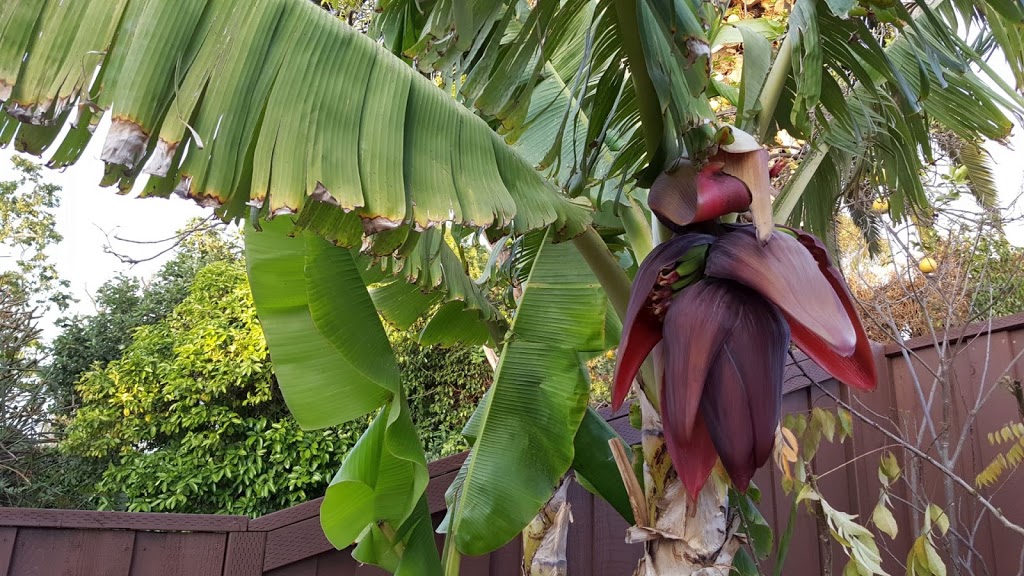There are banana varieties that can withstand temperature drops and grow well in pots or containers, popular especially among the fans of exotic tropical plants. If you get the correct materials and plant and care for your tree properly, you can grow your very own banana tree. Within a year of planting, you can have fruit growing on your new banana tree.
Best banana varieties for gardens
There are many varieties you can choose from, but these are the most popular and most commonly grown:
- Cavendish is the variety that you know from the shops. It’s a stout variety that produces large heavy bunches.
- Lady Fingers are very tall and slender plants and have sweeter fruit.
- Plantains are cooking bananas. They are drier and more starchy. You use them green like you would use potatoes, and they taste similar. 80% of all bananas grown in the world are plantain varieties! They are an important staple food in many tropical countries.
How to start
1. Location
Bananas love sun and heat so choose a sunny location where they will receive light most of the day. Fruiting banana plants will stop growing if in a mostly shady location. Also, shady locations tend to stay wet longer especially in the winter when it is important to reduce watering as it may lead to root rot.
2. Allow sufficient growing space
Some varieties can reach 7.6 m (25ft.) in height, although you should check the source of your banana plant or local banana growers for a more accurate estimate for your locale and variety.
- Each banana plant requires a hole at least 30cm(1ft.) wide and 30cm (1ft.) deep. Larger holes should be used in areas of high wind (but will require more soil).
- Keep banana plants at least 4.5m(15ft) from trees and shrubs (not other banana plants) with large root systems that may compete with the bananas’ water.
- Multiple banana plants help each other maintain beneficial humidity and temperature levels, as long as they are planted at the correct distance. If you can, plant several plants in a clump with 2–3m(6.5–10ft.) between each one, or a large number of banana plants 3–5m(10–16ft.) from each other.
- Dwarf varieties require less space.
3. Selecting planting material
You can acquire a banana sucker (small shoot from the base of a banana plant) from another grower or plant nursery, or buy one online. A banana rhizome or corm is the base from which suckers grow.
Tissue cultures are produced in laboratories to create higher fruit yield. If you’re transplanting a mature plant, prepare a hole appropriate to its size and have an assistant help you.
- The best suckers to use are 1.8-2.1m (6–7ft) in height and have thin, sword-shaped leaves, although smaller suckers should work well if the mother plant is healthy. Big, round leaves are a sign that the sucker is trying to make up for a lack of adequate nutrition from the mother plant.
- If the sucker is still attached to a mother plant, remove it by cutting forcefully downward with a clean shovel. Include a significant portion of the underground base (corm) and its attached roots.
- A rhizome (corm) without notable suckers can be chopped into pieces. Each piece with a bud (proto-sucker) will grow into a banana plant, but this will take longer than using a sucker.
4. Dig a hole for each plant
Remove any plants or weeds that are growing on the planting site, then dig a circular hole 30cm wide and 30 cm deep (1ft. x 1 ft.) A larger hole will provide greater support for the plant but require more soil.
5. Fill the hole with loose, rich soil
Leave several centimeters (a few inches) of space at the top to encourage drainage.
- Do not use potting soil, nor your regular garden soil unless you are sure it is suitable. Soil mixes intended for cacti can produce good results, or ask other growers of the same banana variety.
- The ideal soil acidity for bananas is between pH 5.5 and 7. Acidity pH 7.5 or higher can kill the plant.
Place the plant upright in the new soil. The leaves should be pointing upward and the soil should cover the roots and 1.5–2.5cm (0.5–1 inches) of the base. Tamp the soil down to keep it in place but don’t pack too firmly.
See also: You can have banana plant indoor with a dwarf banana tree
Source: gowritter.com

